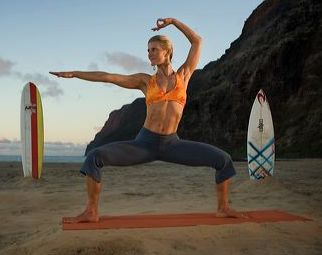
Shiva Rea (born 1967) is a teacher of Vinyasa flow yoga and yoga trance dance. She is the founder of Prana Vinyasa Yoga. She is one of the best-known yoga teachers in America, and around the world.[ citation needed ]

Shiva Rea (born 1967) is a teacher of Vinyasa flow yoga and yoga trance dance. She is the founder of Prana Vinyasa Yoga. She is one of the best-known yoga teachers in America, and around the world.[ citation needed ]

Shiva Rea was born in Hermosa Beach, California, in 1967; [2] her father, liking the image of Nataraja, dancing Shiva, named her after that Hindu deity. [1] She studied dance anthropology at UCLA, completing her master's thesis in 1997 on "hatha yoga as a practice of embodiment". [1] She studied under yoga and tantra masters including Swami Sivananda Saraswati and Daniel Odier. [1] She practised the vigorous Ashtanga Vinyasa Yoga for ten years, adopting a more restorative style when she became pregnant. [1] She teaches Vinyasa flow yoga, having created her own style called Prana Vinyasa, and yoga trance dance. [1] [3] She teaches in the USA and many countries around the world, touring each year. [1] Teachers are similarly trained in the USA and around the world in 200, 300 and 500 hour courses in her Prana Vinyasa yoga, which claims to combine tantra, yoga, and ayurveda. [4] [5] She has contributed to publications including Yoga Journal [6] [7] and Yoga International. [8]
The author and yoga therapist Janice Gates honored Rea with a chapter of her 2006 book on women in yoga, Yoginis. [1] Rea has contributed invited forewords to Mark Stephens's book Yoga Adjustments: Philosophy, Principles, and Techniques, [9] to Alanna Kaivalya's book Myths of the Asanas: The Stories at the Heart of the Yoga Tradition, [10] and to Lorin Roche's book The Radiance Sutras: 112 Gateways to the Yoga of Wonder and Delight. [11]
She has been called one of America's leading yoga teachers. [12] The Library Journal described Rea as a "big name" and a "well-established instructor", whose DVDs embodied the "highest production values". [13] In 2009 she created Global Mala Day to coincide with the United Nations International Day of Peace. [14] The Los Angeles Times described her as one of "yoga's rock stars", [15] and her classes as feeling "more like a multicultural dance session". [16]
In 2007 Vanity Fair called her "the Madonna of the yoga world" in a desert photo shoot; the photographer, Michael O'Neill portrayed her in Dancer pose (Natarajasana) wearing bikini briefs and an outsize bead necklace, with two tigers in a featureless flat landscape. The article said she was "the best-known instructor of Vinyasa flow yoga" and famous for "Yoga Trance Dance". It stated that she visits up to thirty-five countries every year on her teaching tours. [17]
In 2017, Bizzie Gold of Buti Yoga published "An Open Letter to Shiva Rea", criticizing her claim to be teaching traditional yoga. [18]

Kundalini yoga derives from kundalini, defined in tantra as energy that lies within the body, frequently at the navel or the base of the spine. In normative tantric systems, kundalini is considered to be dormant until it is activated and channeled upward through the central channel in a process of spiritual perfection. Other schools, such as Kashmir Shaivism, teach that there are multiple kundalini energies in different parts of the body which are active and do not require awakening. Kundalini is believed by adherents to be power associated with the divine feminine, Shakti. Kundalini yoga as a school of yoga is influenced by Shaktism and Tantra schools of Hinduism. It derives its name through a focus on awakening kundalini energy through regular practice of mantra, tantra, yantra, yoga, laya, haṭha, meditation, or even spontaneously (sahaja).
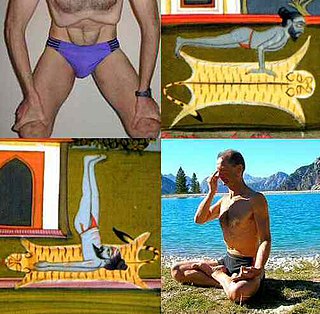
Hatha yoga is a branch of yoga that uses physical techniques to try to preserve and channel vital force or energy. The Sanskrit word हठ haṭha literally means "force", alluding to a system of physical techniques. Some hatha yoga style techniques can be traced back at least to the 1st-century CE, in texts such as the Hindu Sanskrit epics and Buddhism's Pali canon. The oldest dated text so far found to describe hatha yoga, the 11th-century Amṛtasiddhi, comes from a tantric Buddhist milieu. The oldest texts to use the terminology of hatha are also Vajrayana Buddhist. Hindu hatha yoga texts appear from the 11th century onward.

Ashtanga vinyasa yoga is a style of yoga as exercise popularised by K. Pattabhi Jois during the twentieth century, often promoted as a dynamic form of classical Indian (hatha) yoga. Jois claimed to have learnt the system from his teacher Tirumalai Krishnamacharya. The style is energetic, synchronising breath with movements. The individual poses (asanas) are linked by flowing movements (vinyasas).
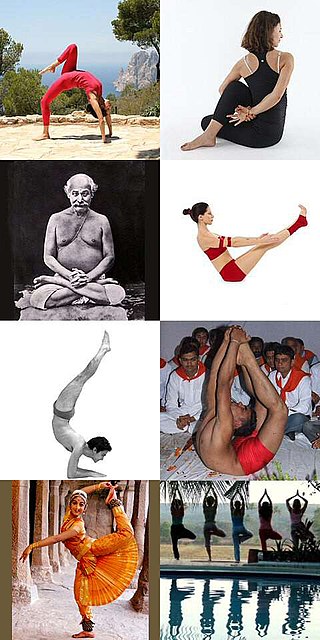
An āsana is a body posture, originally and still a general term for a sitting meditation pose, and later extended in hatha yoga and modern yoga as exercise, to any type of position, adding reclining, standing, inverted, twisting, and balancing poses. The Yoga Sutras of Patanjali define "asana" as "[a position that] is steady and comfortable". Patanjali mentions the ability to sit for extended periods as one of the eight limbs of his system. Asanas are also called yoga poses or yoga postures in English.

Sun Salutation, also called Surya Namaskar(a) or Salute to the Sun (Sanskrit: सूर्यनमस्कार, romanized: Sūryanamaskāra), is a practice in yoga as exercise incorporating a flow sequence of some twelve linked asanas. The asana sequence was first recorded as yoga in the early 20th century, though similar exercises were in use in India before that, for example among wrestlers. The basic sequence involves moving from a standing position into Downward and Upward Dog poses and then back to the standing position, but many variations are possible. The set of 12 asanas is dedicated to the Hindu solar deity, Surya. In some Indian traditions, the positions are each associated with a different mantra.
Ujjayi is a breathing technique employed in a variety of yoga practices. In relation to yoga, it is sometimes called "the ocean breath." Unlike some other forms of pranayama, the ujjayi breath is typically done in association with asana practice in some styles of yoga as exercise, such as Ashtanga Vinyasa Yoga.
Shiva Samhita is a Sanskrit text on yoga, written by an unknown author. The text is addressed by the Hindu ascetic Shiva to his consort Parvati. The text consists of five chapters, with the first chapter a treatise that summarizes nondual Vedanta philosophy with influences from the Sri Vidya school of South India. The remaining chapters discuss yoga, the importance of a guru (teacher) to a student, various asanas, mudras and siddhis (powers) attainable with yoga and tantra.
A vinyasa is a smooth transition between asanas in flowing styles of modern yoga as exercise such as Vinyasa Krama Yoga and Ashtanga Vinyasa Yoga, especially when movement is paired with the breath.

Natarajasana, Lord of the Dance Pose or Dancer Pose is a standing, balancing, back-bending asana in modern yoga as exercise. It is derived from a pose in the classical Indian dance form Bharatnatyam, which is depicted in temple statues in the Nataraja Temple, Chidambaram. Nataraja, the "Dancing King", is in turn an aspect of the Hindu God Shiva, depicted in bronze statues from the Chola dynasty. The asana was most likely introduced into modern yoga by Krishnamacharya in the early 20th century, and taken up by his pupils, such as B. K. S. Iyengar, who made the pose his signature. Natarajasana is among the yoga poses often used in advertising, denoting desirable qualities such as flexibility and grace.

Virabhadrasana or Warrior Pose is a group of related lunging standing asanas in modern yoga as exercise commemorating the exploits of a mythical warrior, Virabhadra. The name of the pose derives from the Hindu myth, but the pose is not recorded in the hatha yoga tradition until the 20th century. Virabhadrasana has some similarity with poses in the gymnastics of Niels Bukh the early 20th century; it has been suggested that it was adopted into yoga from the tradition of physical culture in India at that time, which was influenced by European gymnastics.
The Yogachudamani Upanishad is one of the minor Upanishads of Hinduism composed in Sanskrit, and is called the "Crown Jewel of Yoga". Attached to the Samaveda, it is one of twenty Yoga Upanishads in the four Vedas.

Yoga as exercise is a physical activity consisting mainly of postures, often connected by flowing sequences, sometimes accompanied by breathing exercises, and frequently ending with relaxation lying down or meditation. Yoga in this form has become familiar across the world, especially in the US and Europe. It is derived from medieval Haṭha yoga, which made use of similar postures, but it is generally simply called "yoga". Academics have given yoga as exercise a variety of names, including modern postural yoga and transnational anglophone yoga.

Durvasasana or Durvasana, is an advanced standing asana in hatha yoga, with one leg raised and the foot hooked behind the neck. The similar Trivikramasana has the raised leg straight. There are seated and reclining variations including Bhairavasana. Versions of the pose are depicted in statues in Karnataka and Tamil Nadu from the 8th century onwards. Trivikramasana is described in the 18th century Haṭhābhyāsapaddhati; a pose close to Durvasasana is illustrated as "Trivikramasana" in the 19th century Sritattvanidhi.
Vajroli mudra, the Vajroli Seal, is a practice in Hatha yoga which requires the yogin to preserve his semen, either by learning not to release it, or if released by drawing it up through his urethra from the vagina of "a woman devoted to the practice of yoga".

Modern yoga as exercise has often been taught by women to classes consisting mainly of women. This continued a tradition of gendered physical activity dating back to the early 20th century, with the Harmonic Gymnastics of Genevieve Stebbins in the US and Mary Bagot Stack in Britain. One of the pioneers of modern yoga, Indra Devi, a pupil of Krishnamacharya, popularised yoga among American women using her celebrity Hollywood clients as a lever.
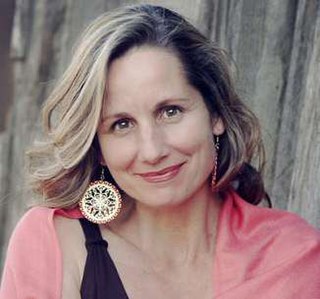
Janice Gates was a teacher of yoga as exercise and mindful yoga, known for her emphasis on the power of yoginis, women in yoga and her work in yoga therapy.

The standing asanas are the yoga poses or asanas with one or both feet on the ground, and the body more or less upright. They are among the most distinctive features of modern yoga as exercise. Until the 20th century there were very few of these, the best example being Vrikshasana, Tree Pose. From the time of Krishnamacharya in Mysore, many standing poses have been created. Two major sources of these asanas have been identified: the exercise sequence Surya Namaskar ; and the gymnastics widely practised in India at the time, based on the prevailing physical culture.
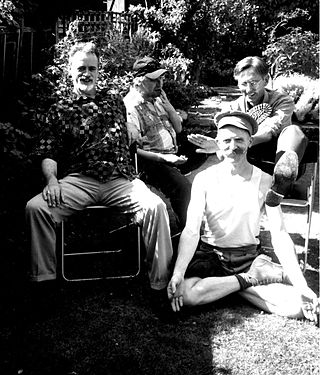
Yoga in Britain is the practice of yoga, including modern yoga as exercise, in Britain. Yoga, consisting mainly of postures (asanas), arrived in Britain early in the 20th century, though the first classes that contained asanas were described as exercise systems for women rather than yoga. Classes called yoga, again mainly for women, began in the 1960s. Yoga grew further with the help of television programmes and the arrival of major brands including Iyengar Yoga and Ashtanga Vinyasa Yoga.

Postural yoga began in India as a variant of traditional yoga, which was a mainly meditational practice; it has spread across the world and returned to the Indian subcontinent in different forms. The ancient Yoga Sutras of Patanjali mention yoga postures, asanas, only briefly, as meditation seats. Medieval Haṭha yoga made use of a small number of asanas alongside other techniques such as pranayama, shatkarmas, and mudras, but it was despised and almost extinct by the start of the 20th century. At that time, the revival of postural yoga was at first driven by Indian nationalism. Advocates such as Yogendra and Kuvalayananda made yoga acceptable in the 1920s, treating it as a medical subject. From the 1930s, the "father of modern yoga" Krishnamacharya developed a vigorous postural yoga, influenced by gymnastics, with transitions (vinyasas) that allowed one pose to flow into the next.
Cyndi Lee is a teacher of mindful yoga, a combination of Tibetan Buddhist practice and yoga as exercise. She has an international reputation and is the author of several books on her approach and runs her business from New York City.